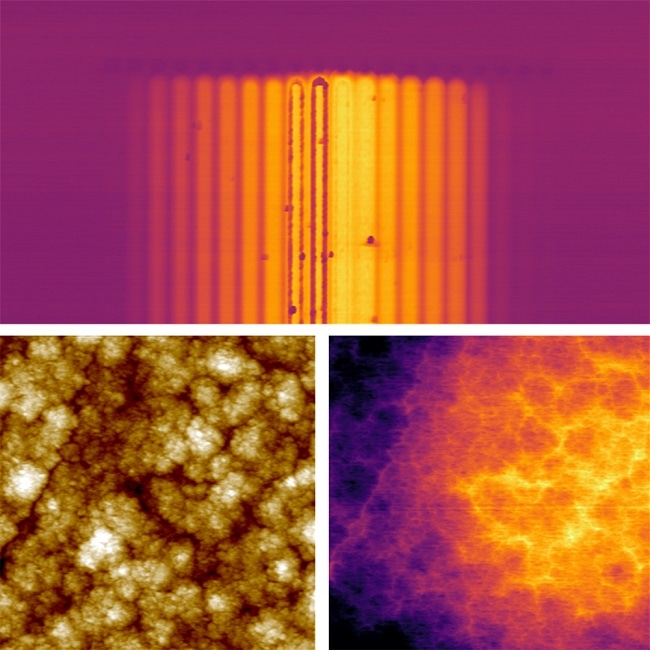
The Asylum SCM module can be used on both conventional semiconductor materials as well as other advanced materials where SCM has not traditionally been used. (Top) The unique capability to directly measure capacitance allows the signal to be linearly correlated with dopant concentration, unlike dC/dV data from conventional SCM modules. (Bottom) This battery electrode material would not have previously been considered a good candidate for SCM imaging, but the higher sensitivity of the Asylum SCM module reveals contrast in the capacitance channel on the right beyond what can be observed in the topographic image on the left.
Oxford Instruments Asylum Research is pleased to present a new application note about the Scanning Capacitance Microscopy (SCM) technique and applications of SCM. Examples from semiconductor devices and other advanced materials demonstrate the unique capabilities; improved sensitivity, faster scanning, higher resolution, and the direct measurement of capacitance of the Asylum SCM module compared to older SCM circuit designs. The application note is ideal for both those who are unfamiliar with SCM technology as well as those who currently use SCM but are not aware of recent advances to the technique.
Our new application note demonstrates some of the unique capabilities of our recently released scanning capacitance microscopy accessory. Results showing a linear correlation of the SCM capacitance data on a standard dopant staircase sample will be of particular interest to those who have struggled to interpret the differential capacitance (dC/dV) data generated by earlier generation SCM modules.
Dominic Paszkeicz, Director of Product, Oxford Instruments Asylum Research
Though most often used to investigate semiconductor devices either during processing or for failure analysis, the new higher sensitivity of the Asylum SCM module enables it to be used across a much broader range of materials, including those that do not form a native oxide layer. Some such examples are shown in the application note, including investigation of 2D materials, quantum dots, and energy storage materials.
For more information see https://afm.oxinst.com/SCM-app-note.